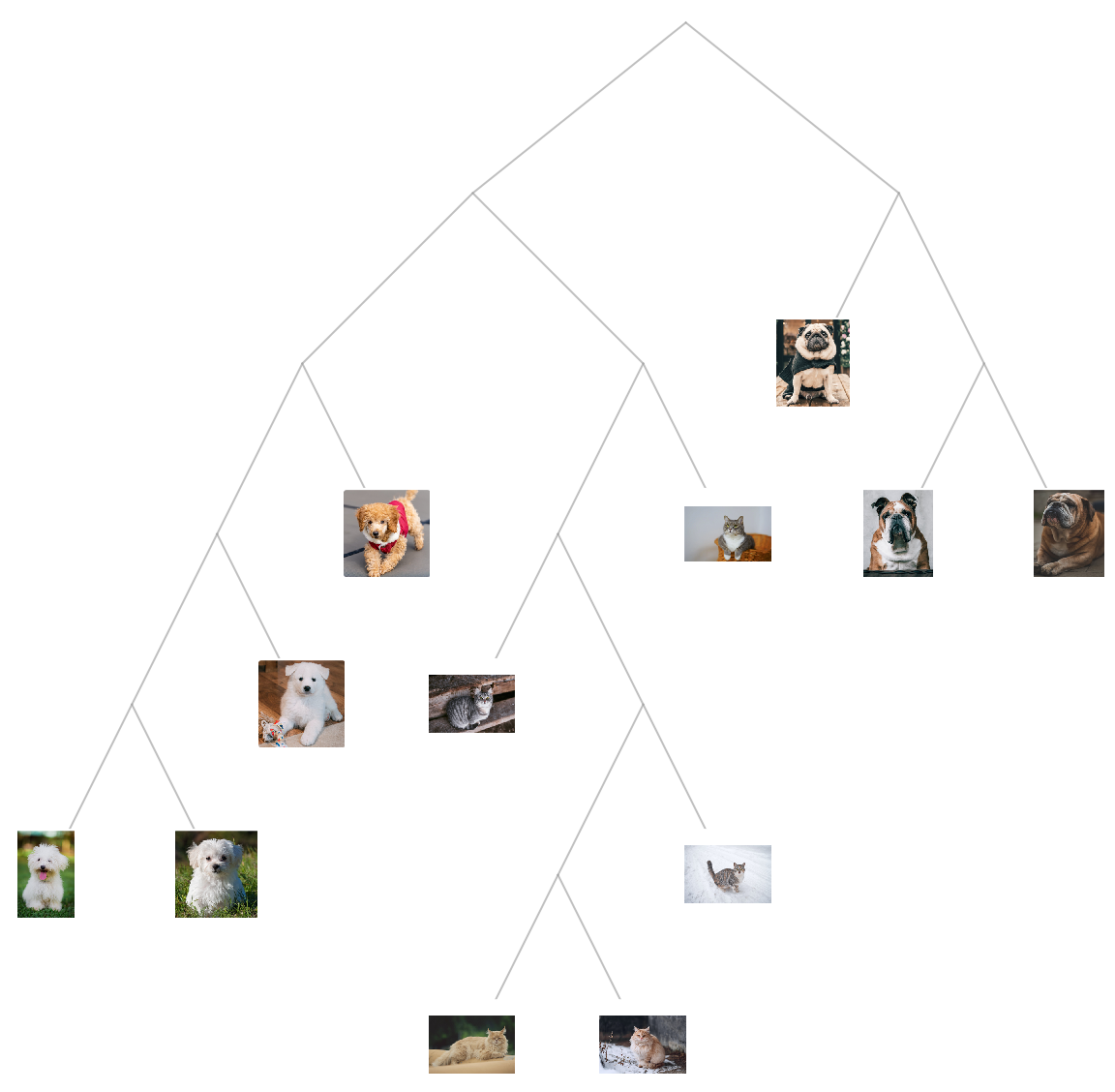Resource retrieval
Get the pre-trained net:
NetModel parameters
This model consists of a family of individual nets, each identified by a specific parameter combination. Inspect the available parameters:
Pick a non-default net by specifying the parameters:
Pick a non-default uninitialized net:
Basic usage
Classify an image:
The prediction is an Entity object, which can be queried:
Get a list of available properties of the predicted Entity:
Obtain the probabilities of the 10 most likely entities predicted by the net. Note that the top 10 predictions are not mutually exclusive:
Obtain the list of names of all available classes:
Feature extraction
Remove the last two layers of the trained net so that the net produces a vector representation of an image:
Get a set of images:
Use the net as a feature extractor to build a clustering tree of the images:
Transfer learning
Use the pre-trained model to build a classifier for telling apart indoor and outdoor photos. Create a test set and a training set:
Remove the last linear layer from the pre-trained net:
Create a new net composed of the pre-trained net followed by a linear layer and a softmax layer:
Train on the dataset, freezing all the weights except for those in the "linearNew" layer (use TargetDevice -> "GPU" for training on a GPU):
Perfect accuracy is obtained on the test set:
Net information
Inspect the number of parameters of all arrays in the net:
Obtain the total number of parameters:
Obtain the layer type counts:
Export to ONNX
Export the net to the ONNX format:
Get the size of the ONNX file:
Check some metadata of the ONNX model:
Import the model back into the Wolfram Language. However, the NetEncoder and NetDecoder will be absent because they are not supported by ONNX:


![(* Evaluate this cell to get the example input *) CloudGet["https://www.wolframcloud.com/obj/3ef3e8a7-4a3e-4a18-8b4e-c7968df739d2"]](https://www.wolframcloud.com/obj/resourcesystem/images/062/062163e5-2de3-4041-98c8-acd0aa21306a/22106c00dd439bc4.png)

![(* Evaluate this cell to get the example input *) CloudGet["https://www.wolframcloud.com/obj/bdb04381-54f3-4341-8c63-4bef344cba54"]](https://www.wolframcloud.com/obj/resourcesystem/images/062/062163e5-2de3-4041-98c8-acd0aa21306a/6420555e297d1a46.png)


![(* Evaluate this cell to get the example input *) CloudGet["https://www.wolframcloud.com/obj/edb00a7e-2aaf-4098-9867-726b2e936973"]](https://www.wolframcloud.com/obj/resourcesystem/images/062/062163e5-2de3-4041-98c8-acd0aa21306a/24ae3f8876323fa6.png)

![(* Evaluate this cell to get the example input *) CloudGet["https://www.wolframcloud.com/obj/cf9bc77c-7015-41a9-a924-ff974a14cd3a"]](https://www.wolframcloud.com/obj/resourcesystem/images/062/062163e5-2de3-4041-98c8-acd0aa21306a/5906fc3578d79e15.png)
![(* Evaluate this cell to get the example input *) CloudGet["https://www.wolframcloud.com/obj/5658e5fd-c4dc-433c-941a-f222f45e896e"]](https://www.wolframcloud.com/obj/resourcesystem/images/062/062163e5-2de3-4041-98c8-acd0aa21306a/0b9e424d460f8514.png)
